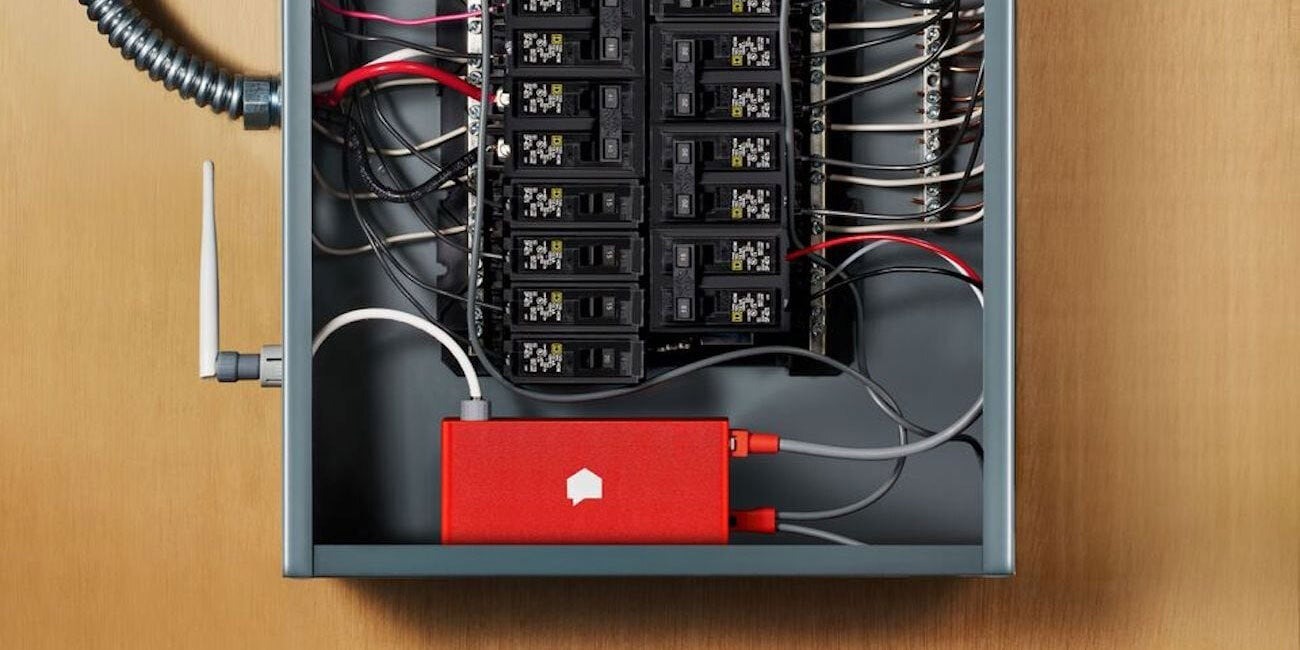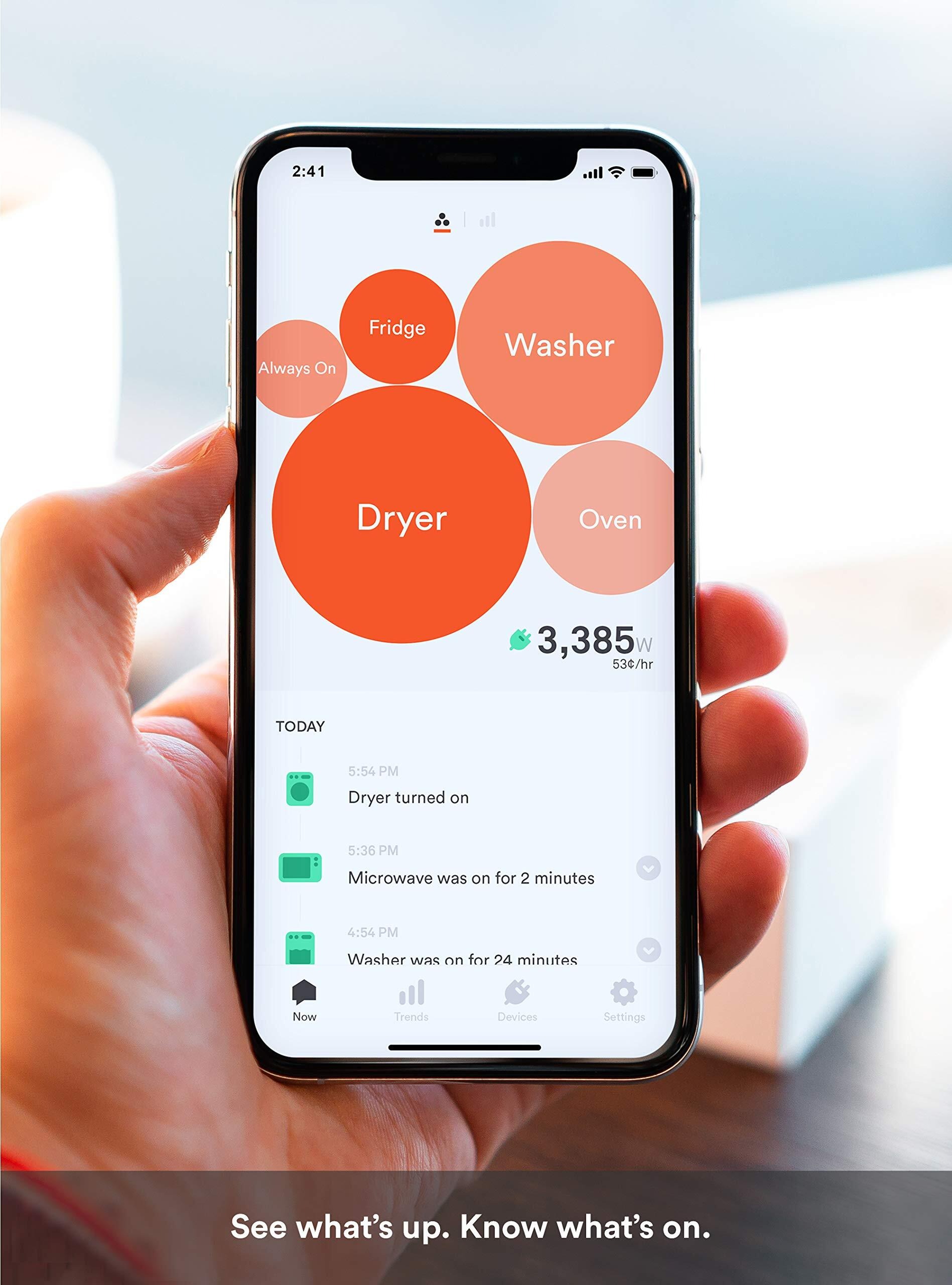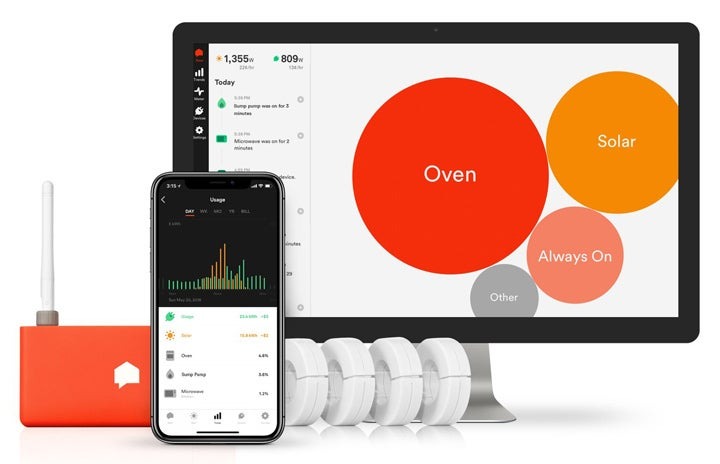
Find out what solar panels cost in your area
If your home uses a lot of electricity, you might benefit from installing the Sense home energy monitor. Sense is a machine-learning smart home device that attaches to the wires inside your home’s circuit breaker panel and immediately begins to track and identify the power used by your appliances and devices.
The Sense monitor is designed to help you track energy consumption, find problems, and adjust your usage patterns to save money in the long run.
Pairing Sense with a home solar installation opens up a whole new world, allowing you to track energy production and consumption in real time. Sense can show you how solar is offsetting your usage, and someday may even help you automatically turn on high-wattage appliances only when your solar system is making enough energy to run them.
Here’s a look at the present and future benefits of the Sense home energy monitor, whether you want to pair it with a solar installation or not.
Key takeaways
-
The Sense energy monitor plugs into your home’s main panel and monitors your energy usage.
-
The monitor automatically detects many household appliances and devices based on their unique energy signatures.
-
Pairing the Sense monitor with its app and your smart home assistant, you can get lots of valuable information about your energy usage, and potentially save money by identifying problems and avoiding high energy prices during peak pricing times.
-
Pairing the Sense monitor with its app and your smart home assistant, you can get lots of valuable information about your energy usage, and potentially save money by identifying problems and avoiding high energy prices during peak pricing times.
-
If you have home solar installed, you can track production and consumption to ensure you’re getting the most from your solar panels.
How Sense home energy monitor works
The Sense monitor is a little box that lives inside the cover of your home’s electrical panel. While you can DIY the initial setup process, it’s absolutely not recommended unless you’re a pro. Most people will want to get a licensed electrician to install Sense for them.
The Sense monitor is used to detect electrical current coming from your utility company into your house. If you have solar panels installed, Sense has an additional port that can be connected to optional detector clamps that attach to the wires coming into your main panel from your solar inverter.
When attached in a Sense-plus-solar setup, the device looks like this:

Sense Solar uses the white clamps to detect energy produced by your solar panels. Image source: Sense
Once the device is properly hooked up, Sense begins to measure the current flowing through your wires.
How using Sense saves money
For the most part, simply monitoring your energy usage won’t save you money. It might help to know exactly how much energy your appliances are using, or to see the effects of vampire power when you unplug your TV, but real savings require a more hands-on approach.
One way using a Sense energy monitor can save you money is by showing you when an appliance is malfunctioning and drawing power even when it’s turned off. Another way is by reminding you when you forget to turn something off that’s no longer needed, like a sump pump or wood shop equipment.
One final way is brand new: Sense now works for people with time-of-use (TOU) energy billing, who get charged more for energy used at peak times. Sense owners can set up “rate zones” within the Sense app that correspond to the various time periods within a TOU plan. The app will let you know when the periods of highest cost start and end, and can even tell you when you’re using more than usual during peak times.
If you have solar panels, you can use Sense to make sure you don’t use more power during a peak hour than your panels are making, meaning you’ll never have to get charged for expensive energy at all.
How Sense detects energy use and identifies appliances
As each of your appliances turns on and off, they use power in specific and unique ways. The creators of Sense use machine learning to train their energy monitor to recognize the unique “electronic signatures” of many kinds of appliances.
After installation, the Sense monitor begins to record the power being used in your home. As various appliances turn on and off, Sense identifies your devices, based on how they match those electronic signatures. It takes some time, and some users have reported needing to shut down and power cycle certain appliances to get Sense to recognize them, but ongoing machine learning means Sense will only get better over time.

The Sense app shows you where your power is going. Image source: Sense
The Sense monitor connects to your home’s 2.4 GHz wi-fi network, then sends data to the Sense cloud that can be accessed from your account. Using the Sense app on your smartphone, you can see your home’s appliances in the app’s dashboard as circles of various sizes and colors that correspond to their usage and device type.
Homeowners with smart assistants will be pleased at how Sense integrates with their existing devices, as Sense works with the Google Assistant and Amazon Alexa. Use the Sense skill for Amazon's Alexa or a simple “Ok, Google” to get real-time information about electricity usage just by asking questions. For example, your assistant can tell you if you left the oven on, when your garage door was last closed, or if your sump pump is running.
What appliances and devices can Sense detect?
Sense is best at finding the kinds of appliances that use a lot of power in specific ways. For example, your toaster draws a lot of power quickly, and shuts off after just a few minutes. The signature of a toaster is very unique. Other appliances like your water heater, HVAC unit, garage door opener, and clothes dryer are very unique in the way they use power and are easy to detect.
Sense’s device detection algorithms are not quite as good at picking out small, low-wattage devices like game consoles, smartphones, and laptops. The more efficient a device is at using power, the less likely that its signal will be detected. Sense owners have reported that it’s possible to get the monitor to detect new devices by turning off most of the other appliances in their homes and specifically turning on just the device you want to track.
How Sense works with solar power
In addition to being able to recognize your individual devices and track your real-time power consumption, Sense can detect the exact amount of energy your solar panels are generating at any given time, as well. Sense apps for Android, iOS, and the web offer this real-time data in a fun “bubble” display.

These real-time displays can quickly inform you which of your home’s appliances is drawing power, and how much power they draw relative to other devices. The addition of the solar sensors also shows you how much solar energy you are generating at one time.
The data gathered by the Sense monitor can also provide a chart of your energy usage over time, showing you energy usage profiles on a daily, weekly, or monthly basis.
Advantages of Sense over other solar monitoring
One thing we’ve heard from solar owners who have installed the Sense monitor is it does a much better job of tracking solar production on a real-time basis than some other solutions. One person we asked said they preferred Sense monitoring over their Enphase app for tracking solar production, because Sense does so immediately, whereas Enphapse only offers updates every 15 minutes.
Sense also tracks both production and consumption of electricity, so you know whether your appliances are drawing more or less power than your solar panels are making. And Sense can be tied into Smart Home technologies using an API or IFTTT (if this, then that), allowing people who are interested in home automation to make their home more efficient by automating when their devices operate.
Disadvantages of Sense
The first thing about Sense that comes to mind when talking disadvantages is the price. The standard retail price is $349 from Amazon, although Sense offers monthly payments of around $20. Unless you’re hoping to uncover a lot of wasted electricity by using Sense, it might not be worth it, financially speaking.
The other disadvantage is that Sense requires patience, and sometimes doesn’t detect always-on appliances like computers, WiFi routers, and more. It can take a month or more for Sense to find some home appliances and devices (although solar tracking works right away), and some users have complained about Sense detecting the same TV dozens of times, or recognizing one of their A/C units but not another identical one for a different part of their house.
Some people have overcome the problem of Sense not auto-identifying their devices by purchasing TP-Link HS110 smart plugs with energy monitoring and plugging devices directly into them.
Is Sense a smart choice for solar owners?
In short: Sense is a home energy monitoring system that can tell you how much electricity devices in your home use and help you find problems with energy consumption. If you have solar, Sense also provides real-time monitoring of your panels’ production. Using a Sense monitor can also enable smart home integration and reduce your electric bill by triggering actions at certain times and under certain conditions.
Pretty simply: unless you’re looking to pinpoint the cause of a major electrical issue, the Sense monitor will likely not be worth it from a financial standpoint. If your solar panels didn’t already come with monitoring software, as most do, the Sense will do that for you with aplomb!
But so much of the value of the Sense isn’t measured in financial terms. If you feel like you could benefit from accurate monitoring of solar panel production and power consumption, to help you see where your money’s going, and you like the idea of tinkering with home automation, maybe the Sense is for you.
And the biggest reason Sense is a smart choice is the continued success of the company can only lead to better things. The promise of software is that it keeps improving, one day interfacing with many aspects of your smart home and allowing all sorts of neat integrations. Since the original version of this article was written, Sense has added some great new functionality, including the ability to track time-of-use rates and save folks money by helping them avoid peak energy pricing.
Bottom line: if you’re a data lover, a solar lover, or under a TOU billing plan, get a Sense monitor and you’ll have access to tons of good data about your home and your energy usage.
Ben Zientara is a writer, researcher, and solar policy analyst who has written about the residential solar industry, the electric grid, and state utility policy since 2013. His early work included leading the team that produced the annual State Solar Power Rankings Report for the Solar Power Rocks website from 2015 to 2020. The rankings were utilized and referenced by a diverse mix of policymakers, advocacy groups, and media including The Center...
Learn more about Ben Zientara